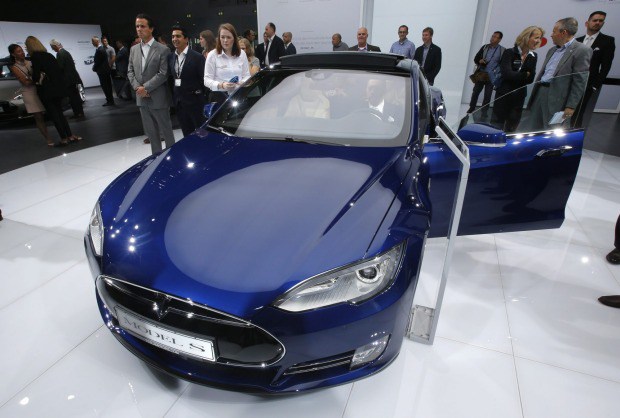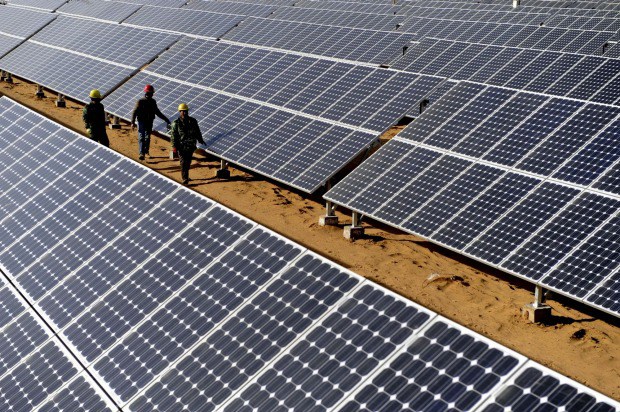Author: Edward Niedermeyer
Elon Musk’s second “master plan” for Tesla Motors arrived much like one of the electric automaker’s cars: brilliant and inspiring, but late and rough around the edges.
And like Tesla’s desirable yet quality-challenged cars, Musk’s vision is sure to be embraced and evangelised by anyone who was already convinced that Tesla is destined to dominate the car business.
But with sales stalling, Tesla has already shown it’s gone as far as it can on the faith of its true believers alone.
If Musk hoped to broaden Tesla’s appeal, his latest strategy needed to do more than preach to the choir.

Musk’s latest sermon takes a leap of faith from the first sentence, declaring “the first master plan that I wrote 10 years ago is now in the final stages of completion”.
This bold claim is worth examining.
First plan complete?
Step 1 was to build a low-volume electric sports car, a goal Tesla achieved with its Roadster.

Step 2 – “develop a medium volume car at a lower price” – has deviated considerably from the original “build an affordable car”, probably because Tesla’s Model S sells for a lot more than its initial (and arguably “affordable”) $US50,000 price target.
Step 3 – “create an affordable, high volume car” – certainly wasn’t accomplished with Tesla’s third car, the Model X SUV, though it may be someday with Tesla’s planned Model 3.
Step 4 – “provide solar power” – is “in the final stages of completion”, Musk says, on the strength of a planned but unapproved merger with solar-energy provider SolarCity.
As it turns out, the incompleteness of Musk’s original plan helps explain the existence of a new one.
In particular, the original plan’s goal of providing renewable power, which previously amounted to little more than an empty promise to make all Tesla Supercharger stations solar-powered, has grown into Point 1 of the new plan: “create stunning solar roofs with seamlessly integrated battery storage”.
There’s no doubt solar panels and storage batteries are complementary products, but Musk doesn’t bother to explain or answer any of the concerns voiced by shareholders.
Instead, he extols the virtues of a unified sales and service organisation and insists making Tesla a solar-power provider was always part of his plan.
Since that long-held but rarely articulated goal is apparently in “the final stages of completion”, Musk must believe that Tesla and SolarCity shareholders need no further convincing.
Cheaper electric cars
With the energy generation and storage side of the business coming into prominence, Tesla’s original strategy of building ever-cheaper electric cars has also been revised.
With a base price of $US35,000 – the average price of a new car in the US – Tesla’s upcoming Model 3 barely qualifies as “affordable” but it’s as cheap as Tesla’s cars will get.
Instead of continuing to push downmarket, Tesla’s latest plan calls for a five-vehicle lineup – two cars, two SUVs and one “new kind of pickup” –that Musk says will “address most of the consumer market”.
Of course, half of the US car market and most of the global market transact below Tesla’s $US35,000 red line, but having blown the initial price estimates on its first three cars, the company’s new restraint seems to reflect a hard-won pragmatism.
Not that Musk is content to let Tesla settle into a luxury-brand niche.
In lieu of lowering costs, Musk says future Teslas will use autonomous-drive technology, which will enable the cars to earn money for their owners by joining on-demand taxi fleets when not in use.
According to Musk, the revenue from this gig economy could significantly offset and at times potentially exceed the monthly loan or lease cost, raising the possibility your future robo-Tesla could pay for itself.
Too good to be true?
If this sounds too good to be true, it’s because it probably is: Tesla is just one of many companies eyeing the autonomous-mobility market.
So the amount of money your Tesla will be able to earn competing with Uber, Lyft and others will be minimal, while the cost of owning a $US35,000 vehicle will be extremely high relative to using these mobility services.
Perhaps the biggest challenge facing the automaker’s robo-taxi ambitions is the fact Teslas have always been designed around owner-driver values such as performance, range and speed, which offer no advantages in a taxi service.
Purpose-built robo-taxis, designed for reliability, interior space and comfort, will be far more economical and appealing than your off-duty Model 3.
But Musk says Tesla will do that, too, and an urban transport vehicle is being designed to replace buses. There’s even a Tesla semi-truck planned, which Musk says will be “fun to drive”, even though that makes about as much sense in a long-haul truck as a range-limited battery electric drivetrain.
Futuristic dream
From solar panels and energy storage to robo-taxis and semis, Musk’s vision for Tesla conjures up a world so enthrallingly futuristic it’s hard not to get carried away by it.
Many of his ideas are good ones, and countless companies are sinking billions into realising them. But coming from a company that is struggling to meet the auto industry’s quality standards – not to mention its own price and production targets – even at small volumes and high prices, these sweeping ambitions come across as intellectual curiosity and sheer hubris.
The only common thread uniting this diverse array of products – battery cells produced at Tesla’s Gigafactory – doesn’t provide anywhere near enough industrial logic to justify the kind of sprawling conglomerate Musk envisions.
The most troubling thing about Musk’s new plan is it ignores the most consistent criticisms of Tesla: that the company overpromises, underdelivers, lacks focus, and over-relies on Musk’s vision.
Simply producing a high-quality Model 3 at high volumes on the promised timeline (and supporting it with competitive services) would be a monumental achievement.
But doing that requires intense focus not on the exciting possibilities of tomorrow but on the prosaic realities of today.
The determined grind of manufacturing may not feed the public’s hunger for visionary futurism, but that’s how ideas become realities. Until Tesla delivers on its decade-old promise of an affordable electric car, Musk’s rambling ideation amounts to little more than escapist entertainment.
Twitter: @CFTR
YouTube: Citizens for the Republic
Facebook: @CitizensForTheRepublic
Website: CFTR.org